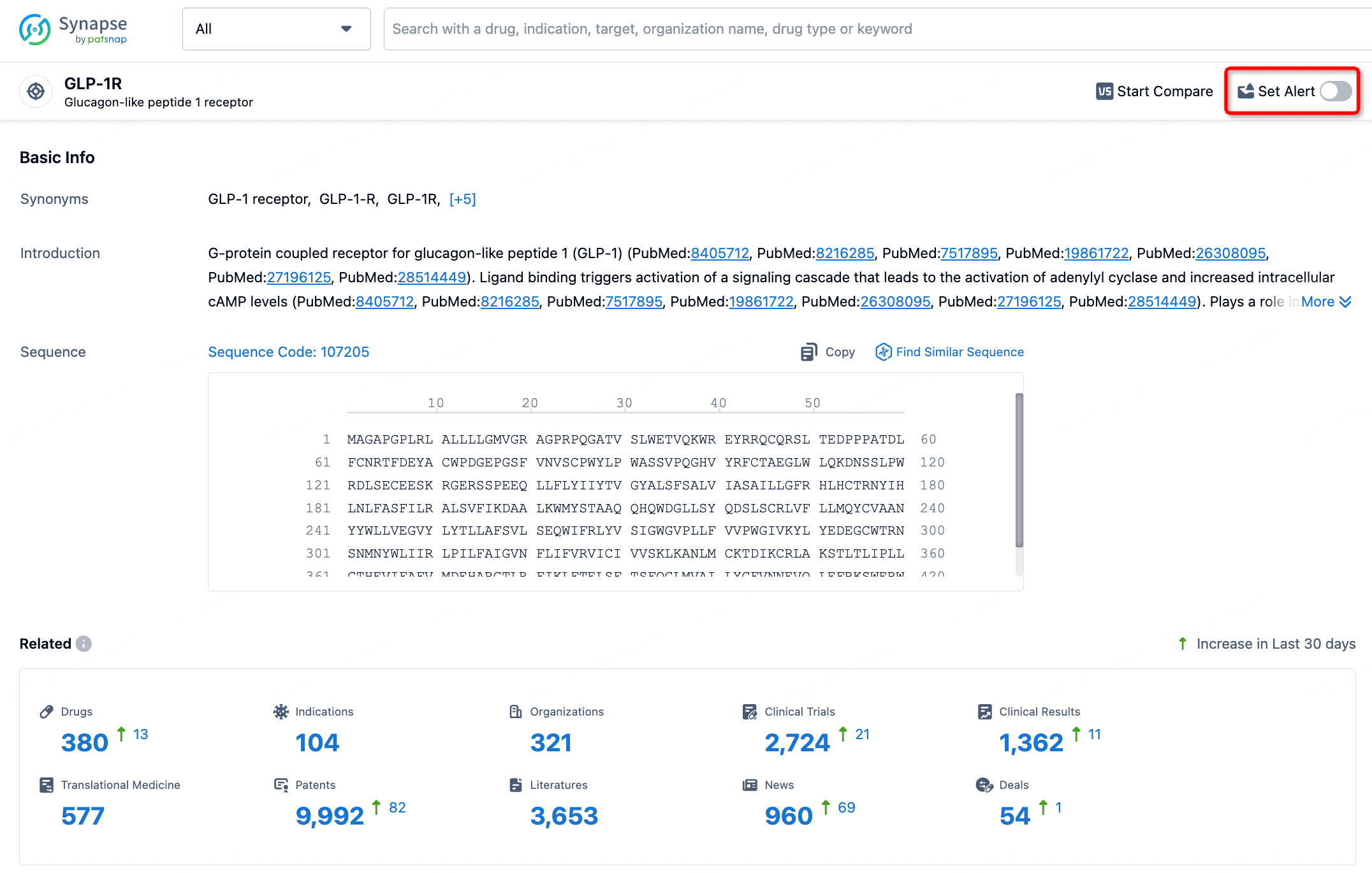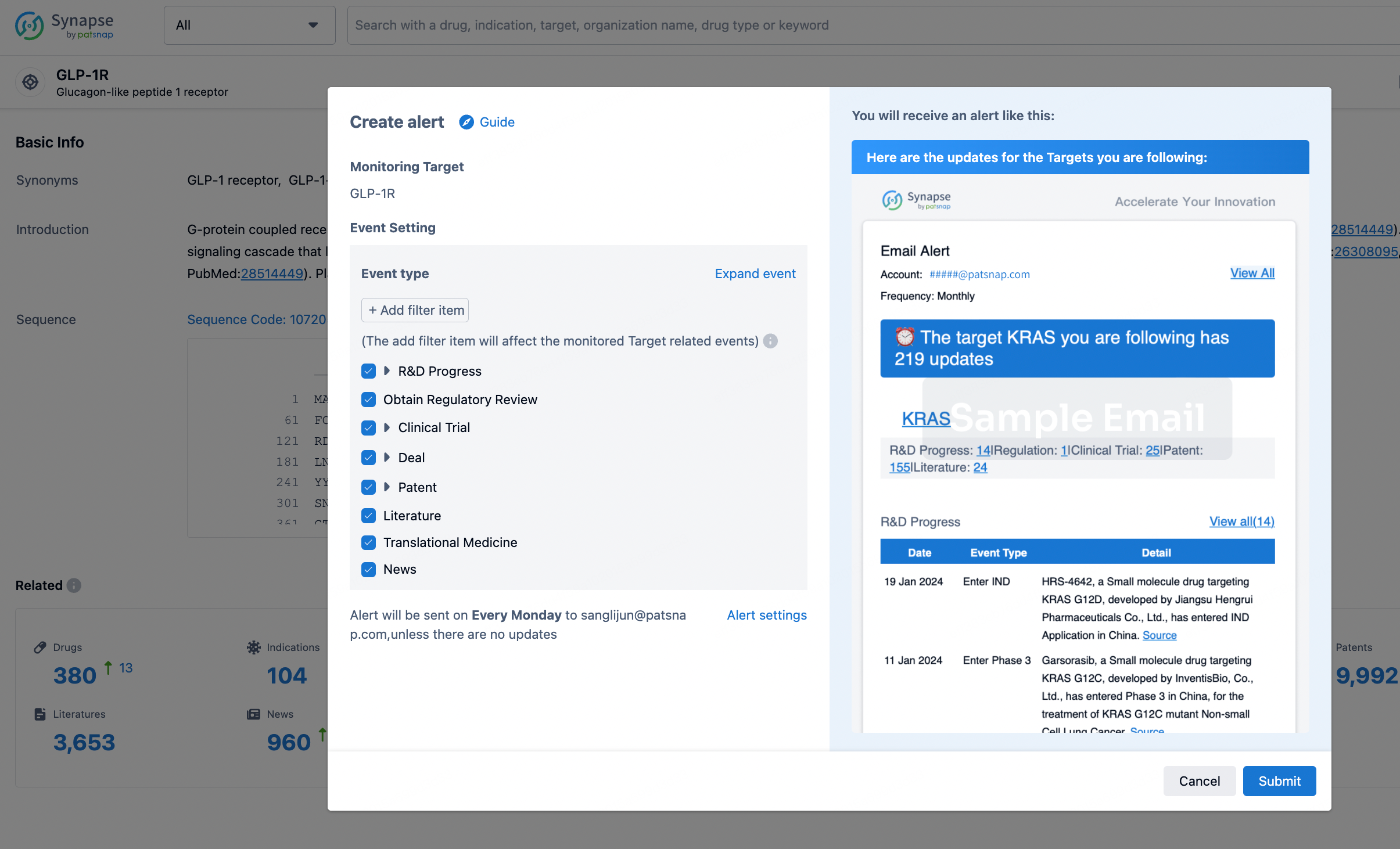Request Demo
What are β3-adrenergic receptor antagonists and how do they work?
21 June 2024
The β3-adrenergic receptor is one of the three subtypes of adrenergic receptors, alongside β1 and β2 receptors. Unlike its counterparts, which are primarily found in the heart and lungs, the β3-adrenergic receptor is mostly associated with adipose tissue, the bladder, and the gallbladder. Over the years, this receptor has garnered significant attention due to its role in lipid metabolism, thermogenesis, and bladder function. This interest has led to the development of β3-adrenergic receptor antagonists, which block the receptor's activity.
β3-adrenergic receptor antagonists work by binding to the β3-adrenergic receptors and blocking them, thus preventing the receptor from interacting with endogenous catecholamines like norepinephrine and epinephrine. These catecholamines are typically released in response to stress and activate the β3-adrenergic receptors, leading to various physiological effects. By blocking this interaction, β3-adrenergic receptor antagonists inhibit the downstream signaling pathways that would normally be activated by the receptor.
One of the primary pathways influenced by the β3-adrenergic receptor involves cyclic adenosine monophosphate (cAMP) and protein kinase A (PKA). Normally, when the β3-adrenergic receptor is activated, it triggers an increase in cAMP levels, which in turn activates PKA. PKA then phosphorylates various target proteins, leading to effects such as lipolysis in adipose tissue and relaxation of the detrusor muscle in the bladder. By blocking this pathway, β3-adrenergic receptor antagonists can prevent these physiological responses, which can be beneficial in certain medical conditions.
The therapeutic applications of β3-adrenergic receptor antagonists are still an emerging area of research. However, several potential uses have been identified, particularly in the realms of metabolic disorders, urology, and possibly even oncology.
In metabolic disorders, the β3-adrenergic receptor has been implicated in the regulation of lipid metabolism and energy expenditure. Some studies suggest that overactivation of this receptor could contribute to obesity and related metabolic syndromes by promoting excessive lipolysis and thermogenesis. By inhibiting this receptor, β3-adrenergic receptor antagonists may help to modulate these effects, potentially offering a new avenue for the treatment of obesity and metabolic syndrome.
In urology, the β3-adrenergic receptor is known to play a role in bladder function, particularly in the relaxation of the detrusor muscle, which is responsible for bladder storage. Overactive bladder (OAB) is a condition characterized by sudden, involuntary contractions of the detrusor muscle, leading to symptoms such as urgency, frequency, and incontinence. By blocking the β3-adrenergic receptor, antagonists may help to reduce these involuntary contractions, providing relief for patients with OAB. While β3-adrenergic receptor agonists are currently more commonly used for this purpose, antagonists could offer an alternative for patients who do not respond well to agonist treatment.
There is also some emerging evidence to suggest that β3-adrenergic receptor antagonists may have potential applications in oncology. Some studies have indicated that β3-adrenergic receptors may be involved in tumor growth and metastasis, particularly in cancers such as melanoma and breast cancer. By inhibiting these receptors, β3-adrenergic receptor antagonists could potentially slow down tumor progression and improve patient outcomes. However, this is still a relatively new area of research, and more studies are needed to fully understand the potential benefits and mechanisms involved.
In conclusion, β3-adrenergic receptor antagonists represent a promising area of pharmacological research with potential applications in metabolic disorders, urology, and even oncology. By blocking the β3-adrenergic receptor and inhibiting its downstream signaling pathways, these antagonists can modulate various physiological processes, offering new avenues for the treatment of a range of conditions. While more research is needed to fully elucidate their therapeutic potential, the future of β3-adrenergic receptor antagonists looks bright.
β3-adrenergic receptor antagonists work by binding to the β3-adrenergic receptors and blocking them, thus preventing the receptor from interacting with endogenous catecholamines like norepinephrine and epinephrine. These catecholamines are typically released in response to stress and activate the β3-adrenergic receptors, leading to various physiological effects. By blocking this interaction, β3-adrenergic receptor antagonists inhibit the downstream signaling pathways that would normally be activated by the receptor.
One of the primary pathways influenced by the β3-adrenergic receptor involves cyclic adenosine monophosphate (cAMP) and protein kinase A (PKA). Normally, when the β3-adrenergic receptor is activated, it triggers an increase in cAMP levels, which in turn activates PKA. PKA then phosphorylates various target proteins, leading to effects such as lipolysis in adipose tissue and relaxation of the detrusor muscle in the bladder. By blocking this pathway, β3-adrenergic receptor antagonists can prevent these physiological responses, which can be beneficial in certain medical conditions.
The therapeutic applications of β3-adrenergic receptor antagonists are still an emerging area of research. However, several potential uses have been identified, particularly in the realms of metabolic disorders, urology, and possibly even oncology.
In metabolic disorders, the β3-adrenergic receptor has been implicated in the regulation of lipid metabolism and energy expenditure. Some studies suggest that overactivation of this receptor could contribute to obesity and related metabolic syndromes by promoting excessive lipolysis and thermogenesis. By inhibiting this receptor, β3-adrenergic receptor antagonists may help to modulate these effects, potentially offering a new avenue for the treatment of obesity and metabolic syndrome.
In urology, the β3-adrenergic receptor is known to play a role in bladder function, particularly in the relaxation of the detrusor muscle, which is responsible for bladder storage. Overactive bladder (OAB) is a condition characterized by sudden, involuntary contractions of the detrusor muscle, leading to symptoms such as urgency, frequency, and incontinence. By blocking the β3-adrenergic receptor, antagonists may help to reduce these involuntary contractions, providing relief for patients with OAB. While β3-adrenergic receptor agonists are currently more commonly used for this purpose, antagonists could offer an alternative for patients who do not respond well to agonist treatment.
There is also some emerging evidence to suggest that β3-adrenergic receptor antagonists may have potential applications in oncology. Some studies have indicated that β3-adrenergic receptors may be involved in tumor growth and metastasis, particularly in cancers such as melanoma and breast cancer. By inhibiting these receptors, β3-adrenergic receptor antagonists could potentially slow down tumor progression and improve patient outcomes. However, this is still a relatively new area of research, and more studies are needed to fully understand the potential benefits and mechanisms involved.
In conclusion, β3-adrenergic receptor antagonists represent a promising area of pharmacological research with potential applications in metabolic disorders, urology, and even oncology. By blocking the β3-adrenergic receptor and inhibiting its downstream signaling pathways, these antagonists can modulate various physiological processes, offering new avenues for the treatment of a range of conditions. While more research is needed to fully elucidate their therapeutic potential, the future of β3-adrenergic receptor antagonists looks bright.
How to obtain the latest development progress of all targets?
In the Synapse database, you can stay updated on the latest research and development advances of all targets. This service is accessible anytime and anywhere, with updates available daily or weekly. Use the "Set Alert" function to stay informed. Click on the image below to embark on a brand new journey of drug discovery!
AI Agents Built for Biopharma Breakthroughs
Accelerate discovery. Empower decisions. Transform outcomes.
Get started for free today!
Accelerate Strategic R&D decision making with Synapse, PatSnap’s AI-powered Connected Innovation Intelligence Platform Built for Life Sciences Professionals.
Start your data trial now!
Synapse data is also accessible to external entities via APIs or data packages. Empower better decisions with the latest in pharmaceutical intelligence.


